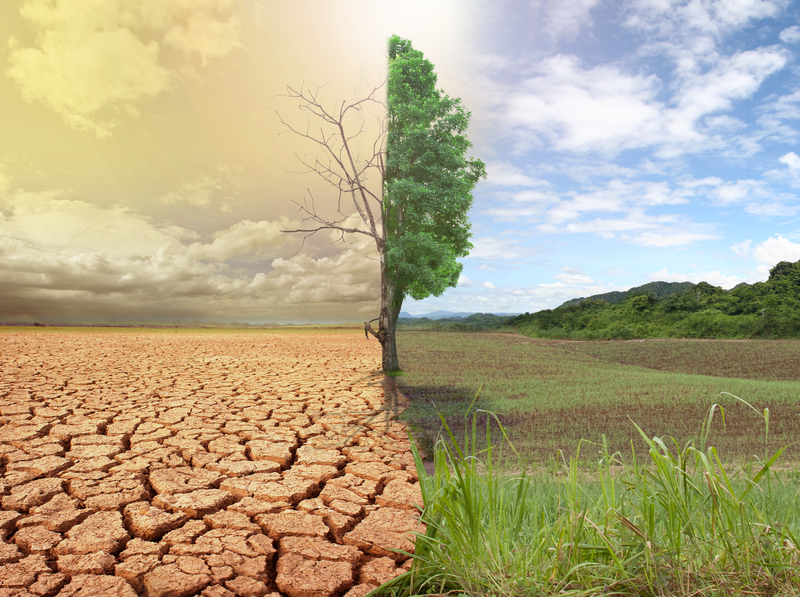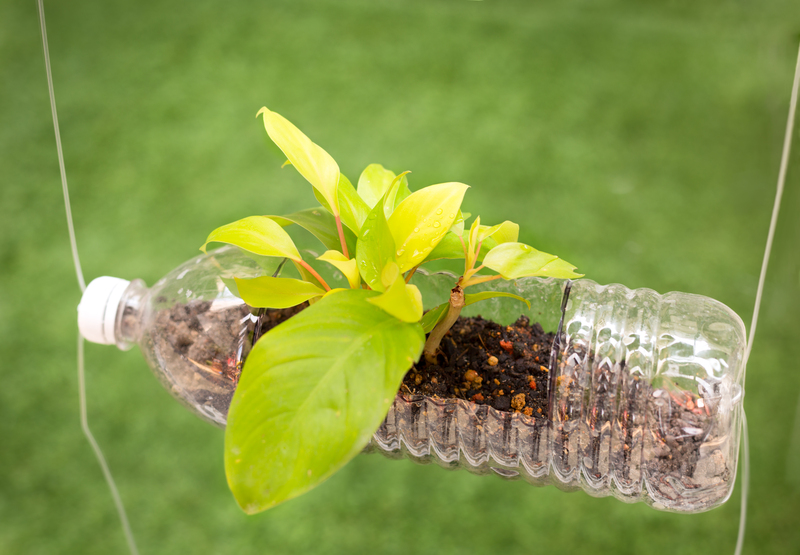The Art of Cardboard Disposal in Waste Management
Cardboard is ubiquitous in our daily lives-- from the boxes that deliver our online purchases to the cartons that hold groceries and retail goods. While cardboard is an essential packaging material, the proper disposal of cardboard waste is crucial to promoting sustainability, reducing landfill overflows, and conserving vital resources. In this comprehensive guide, we'll explore the art of cardboard disposal within the greater context of effective waste management, providing actionable tips and insights to help households, businesses, and communities do their part for the environment.

Understanding Cardboard as a Waste Material
Cardboard comes in various forms, such as corrugated fiberboard (used in boxes), paperboard (used for cereal boxes), and chipboard (found in packaging). Its widespread use leads to a significant fraction of municipal solid waste. In fact, according to the Environmental Protection Agency (EPA), Americans generated over 67 million tons of paper and cardboard waste in 2018, underscoring the need for effective cardboard management.
Why Is Cardboard Disposal Important?
Proper cardboard disposal is more than a matter of tidiness; it plays a vital role in sustainable waste management. Cardboard is easily recyclable and, when processed appropriately, reduces the need for raw materials like trees and water. By mastering the art of disposing cardboard, individuals and businesses help:
- Conserve natural resources
- Reduce greenhouse gas emissions
- Minimize landfill waste
- Support the recycling industry
- Promote a circular economy
Best Practices for Cardboard Disposal
1. Recognize Recyclable Cardboard
Not all "cardboard" products are suitable for recycling. Generally, clean and dry cardboard can be recycled. Avoid placing cardboard contaminated with food, grease, or excessive tape in recycling bins, as these substances disrupt the recycling process.
- Corrugated cardboard: Used in shipping boxes; easily recyclable when clean and dry.
- Paperboard/chipboard: Used in cereal or shoe boxes; also widely accepted.
Contaminated cardboard, such as pizza boxes soiled with cheese or oil, should be disposed of in the trash or composted if possible.
2. Break Down Boxes Properly
A fundamental step in cardboard waste management is breaking down boxes before disposal. Flattening not only saves space in your recycle bin but also aids in efficient collection and processing by recycling centers.
- Remove any non-cardboard packing materials (such as plastics, foam inserts, or bubble wrap).
- Take off as much tape and labels as possible (a small amount is generally tolerable).
- Flatten boxes to create manageable, stackable sheets.
3. Keep Cardboard Clean and Dry
Moisture and food residue are the top culprits that reduce the recyclability of cardboard. Keeping it clean and dry ensures it will be processed into new paper products, rather than being diverted to landfills.
- Don't store cardboard outside if rain is expected.
- Don't place wet cardboard in recycling bins.
- Avoid using cardboard as a makeshift food plate or surface.
Cardboard Recycling: Process and Benefits
How Is Cardboard Recycled?
After curbside collection or drop-off at a recycling center, cardboard undergoes a straightforward but highly effective recycling journey. The process usually involves:
- Sorting: Cardboard is separated from other recyclables and contaminants.
- Shredding: The material is cut into small pieces to facilitate processing.
- Pulping: Cardboard is mixed with water and chemicals to break it down into a slurry, called "pulp."
- Filtering/De-inking: The pulp is filtered to remove inks, adhesives, and contaminants.
- Pressing and Drying: Pulp is pressed into sheets and dried, forming new cardboard products.
This closed-loop system allows cardboard to be recycled up to seven times before the fibers become too short.
Benefits of Cardboard Recycling
- Saves Trees: Recycling one ton of cardboard saves around 17 trees.
- Conserves Water: Recycled cardboard uses 50% less water compared to manufacturing from raw materials.
- Reduces Landfill Waste: Every ton of recycled cardboard diverts about 9 cubic yards of landfill space.
- Decreases Greenhouse Gas Emissions: Recycling minimizes methane production from cardboard decomposing in landfills.
- Supports Employment: The cardboard recycling industry creates green jobs and economic value.
Creative Cardboard Disposal: Beyond the Bin
Options for Reusing and Upcycling Cardboard
While recycling is key, reusing and upcycling cardboard can take things a step further by prolonging its life span before entering the waste stream. Here are some creative ideas:
- DIY Projects: Cardboard boxes can be repurposed into drawer dividers, organizers, or kids' playhouses.
- Gardening: Use cardboard as weed barriers in garden beds or for composting.
- Pet Supplies: Make scratching posts, beds, or play structures for small animals.
- School and Craft Projects: Provide materials for students and crafters to create models, dioramas, or decorations.
The Role of Businesses in Cardboard Waste Management
Businesses generate significant volumes of cardboard waste due to packaging, shipping, and inventory operations. Implementing systematic cardboard disposal policies is pivotal for companies seeking to minimize their environmental footprint.
- Train staff to break down, separate, and store cardboard properly.
- Partner with local recyclers or waste management services to ensure regular pickups.
- Invest in balers or shredders to reduce cardboard volume and facilitate transport.
- Encourage suppliers to use recyclable or returnable packaging where feasible.
Cardboard Disposal in Apartments and Densely Populated Areas
Apartment buildings and urban zones often face challenges in effective cardboard disposal due to limited bin space and increased accumulation during peak seasons (like the holidays). Best practices include:
- Designating special cardboard collection points in communal areas.
- Scheduling extra pickups during online shopping spikes.
- Educating residents on flattening and cleaning boxes.
Composting Cardboard: An Alternative Disposal Method
If recycling is unavailable, many forms of cardboard, especially brown or non-coated varieties, can be composted. Cardboard composting returns nutrients to the soil and diverts waste from landfills.
- Remove ink, tape, and labels before composting.
- Shred or tear the cardboard into smaller pieces to speed up decomposition.
- Mix with other compost materials like leaves and food scraps for optimal results.
Never compost waxy, coated, or brightly colored cardboard, as these may contain non-biodegradable substances.
Improving Cardboard Disposal in Your Community
Advocating for Better Recycling Infrastructure
Local governments and municipalities can promote sustainable cardboard management by:
- Expanding curbside recycling capabilities
- Offering community drop-off sites for excess cardboard
- Hosting educational campaigns about correct cardboard disposal methods
Innovations in Cardboard Waste Processing
Technological advancements have improved the efficiency of cardboard recycling. Some facilities now use advanced optical sorting, robotics, and artificial intelligence to detect and separate cardboard from mixed waste streams. These innovations result in higher recovery rates and improved product quality.
Common Mistakes to Avoid When Disposing of Cardboard
- Don't place food-soiled cardboard in recycling. Instead, compost or trash it if recycling isn't feasible.
- Don't throw away cardboard unnecessarily. Seek out reuse, recycling, or donation options first.
- Don't leave boxes unbroken/unflattened in bins. This takes up space and may result in missed collections.
- Don't include plastic bags or packing materials with cardboard. These should be disposed of separately, as they jam recycling machinery.
Regulations Surrounding Cardboard Disposal
Many municipalities have rules--sometimes backed by fines--regarding cardboard disposal and recycling. Some cities require cardboard recycling by law; others impose landfill bans on cardboard waste. Check your local guidelines to ensure full compliance and support for local recycling infrastructure.
Frequently Asked Questions About Cardboard Waste Management
- Can I recycle pizza boxes?
If they are excessively greasy or have food residue, compost the clean parts and trash the rest. If mostly clean, recycle after removing food scraps.
- What should I do with cardboard tubes or small boxes?
These are typically accepted in recycling programs. Just ensure they're clean and dry.
- Is colored or coated cardboard recyclable?
Some coated or heavily printed cardboards are not widely accepted--check your local guidelines.
- What about boxes with lots of tape or staples?
Remove as much as possible. Small residues are usually filtered during recycling.

Conclusion: Embracing the Art of Cardboard Disposal
Mastering the art of cardboard disposal in waste management benefits more than just your household. Proper cardboard recycling and disposal strategies:
- Conserve precious resources
- Reduce landfill burdens
- Help combat climate change
- Support eco-friendly communities
By following best practices for cardboard waste management, advocating for better systems, and being creative with reuse, everyone can contribute to a cleaner, more sustainable future. The next time you're faced with a pile of boxes, remember--every small act of responsible disposal adds up to big environmental gains.